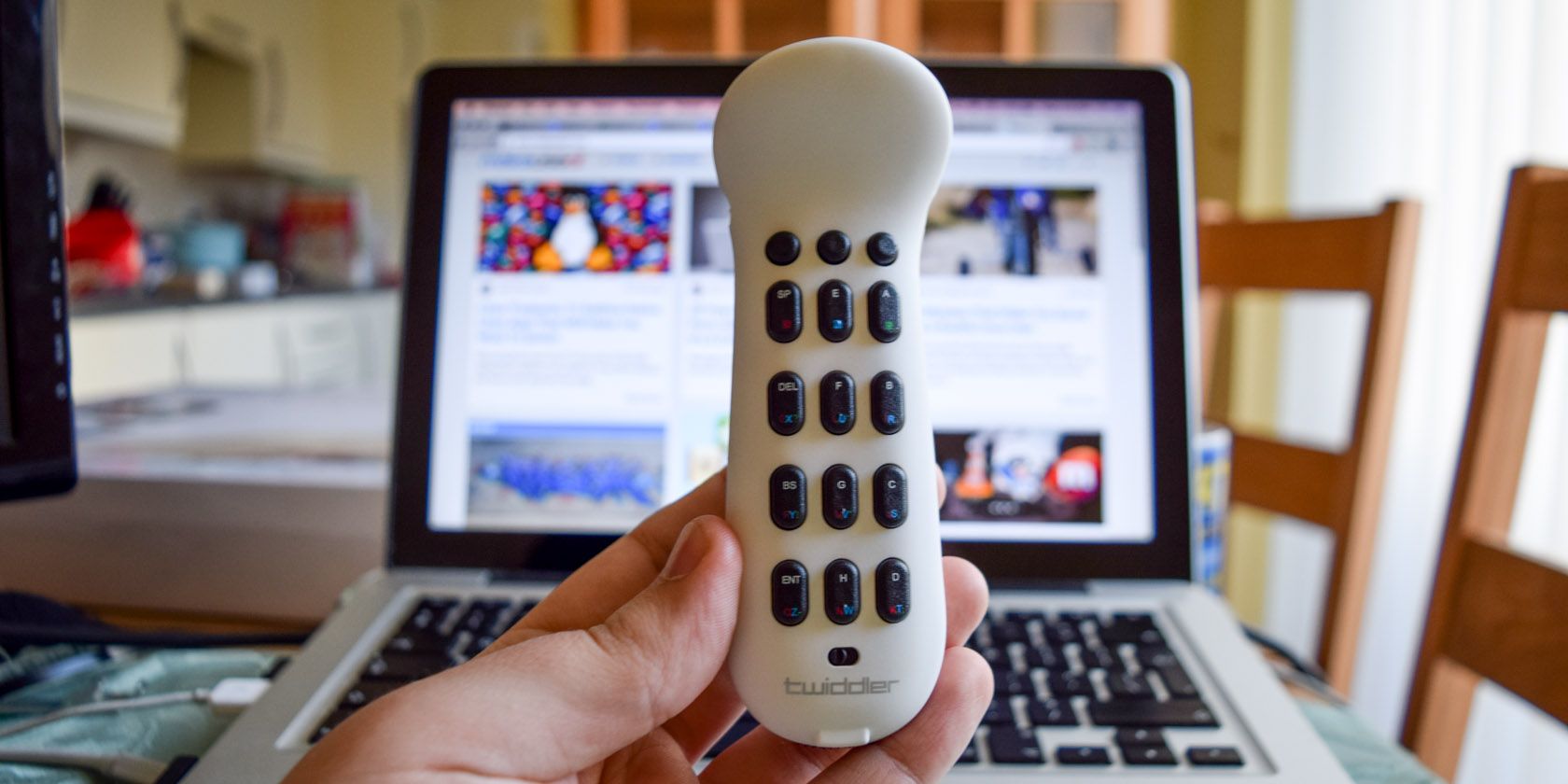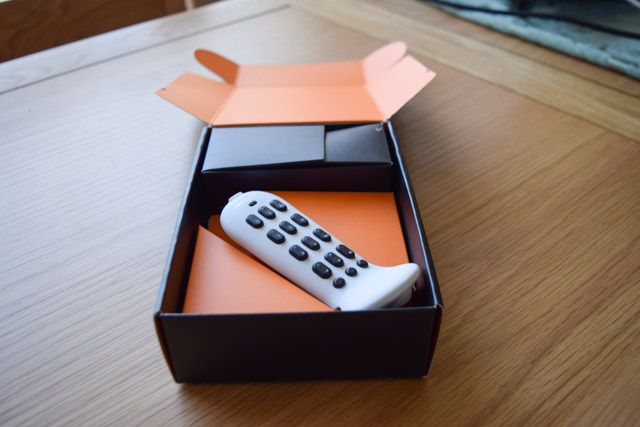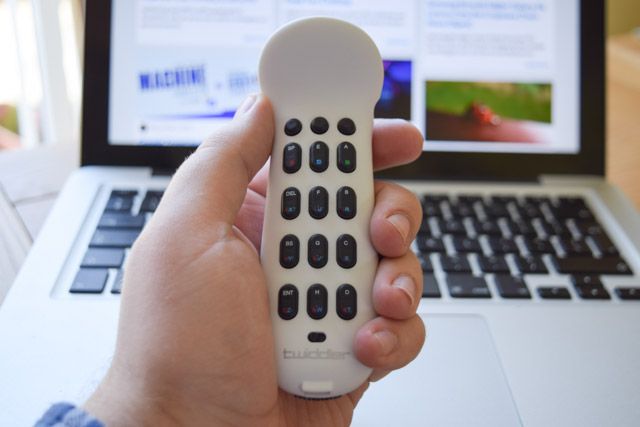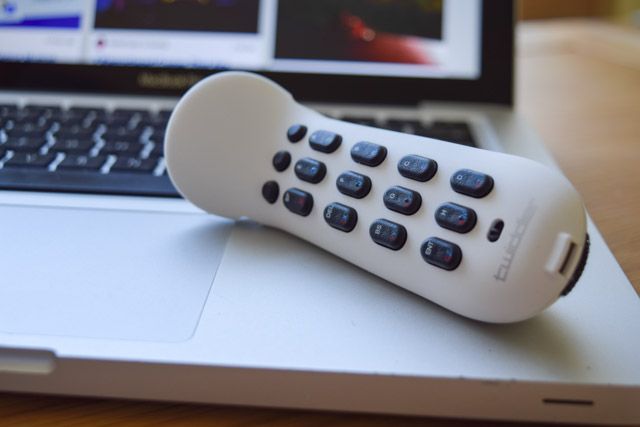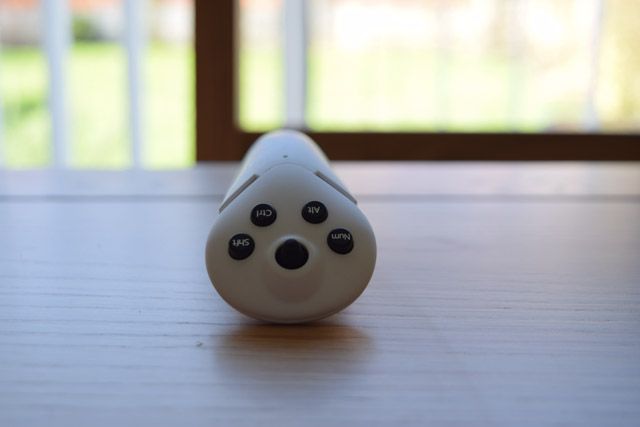Twiddler 3
The Twiddler is a one-handed keyboard device which works using chording to theoretically enable typing at up 240 words per minute; and it has a mouse pointer. Mind blown yet?
If you've ever been in a courtroom, you've probably noticed the person in the corner diligently typing away at breakneck speed on a little typewriter-like device. Those are called Stenotype machines, and allow the users to type entire words by combining multiple keystrokes into single 'chords'.
The Twiddler 3, from Canadian outfit TekGear, takes that principle and applies it outside of the courtroom. It costs $199, and fits snugly in the palm of your hand. It also includes a pointing device, oddly reminiscent of the rubber 'nipples' that came with the IBM Thinkpad laptops of yesteryear.
But how easy is it to learn, and can it replace your keyboard? Read on to find out, and to win one!
In The Box
The Twiddler comes with some relatively minimalist packaging, made out of thin black cardboard on the outside, and a slightly garish orange cardboard on the interior.
Included is a USB cable, the Twiddler 3, and a velcro strap that seemingly can only wrap around the most svelte of hands. If you're unfortunate enough to be cursed with normal-sized hands, this won't work for you.
The Twiddler Device
The Twiddler 3 occupies roughly the same dimensions of a Snickers bar, with a slight 'chin' that brings back memories of the HTC Hero from yesteryear. On the front, there are three rows of letters, plus the Twiddler equivalent of the three mouse buttons. On the rear, there's the mouse 'nipple', plus the Num, Alt, CTRL and Shift keys.
At the bottom of the device, there's the USB port, and a piece of velcro fabric which the strap attaches to. The device charges over that USB port, and can connect through it, in addition to through a Bluetooth 2.1 connection. I tried it on my Mac running OS X Yosemite, and it worked first time, despite the protestations of the OS X Keyboard Wizard insisting that it wasn't set up correctly.
You'll probably notice that the Twiddler doesn't have a full QWERTY keyboard. As previously mentioned, it uses a chording system, which removes the need for there to be a key for every letter in the alphabet. But how does it work?
Learning To Use The Twiddler
Learning a new keyboard layout takes a lot of practice, but this is an entirely new input device. Thankfully, there's the Twiddler Tutor web application, which trains you how to use the device through typing repetitive sentences.
I'm a big fan of this approach. I genuinely believe that the only way to get the grasp of something is to do it, until it becomes so deeply ingrained in your muscle memory you don't even have to think about it. But the problem with the Twiddler Tutor is that it's buggy and prone to hanging, making it a frustrating piece of software.
However, it's simple to discern the correct chords to produce letters, since they're color coded on the front of the keyboard. Whilst your milage may vary, you might find it helpful to just open a word-document and learn through trial and error.
Out Of The Box
In the Twiddler world, there are two types of people. Those with small hands and long, protruding fingers – and everyone else.
If you fall into the former category, great! Twiddler 3 is for you. You can use it with one hand, and its improbably-small strap will wrap around your hand without cutting off any circulation. But if you're unfortunate enough to be cursed with squat, stubby fingers and flabby hands, then you're going to have a rough time with the Twiddler.
It's unambiguously marketed as a device for people to type with one hand. I tried, but was unable to comfortably or reliably use it in that fashion, and could only really use it in a two-handed position.
This was demonstrated when I tried to write a letter K or T, which requires the user to press the two keys that are furthest from each other. I tried doing this with my right hand and found it practically impossible. This, for the most part, puts the one-handed credentials of the Twiddler in doubt.
The Mouse
On the rear of the device, there's the aforementioned pointing device 'nipple'. I'm in two minds about it.
On one hand, it blends the two input devices quite beautifully. Every mouse button you could possibly need is present, and you can easily, albeit slowly, navigate through your applicatyionwindows. But nonetheless, it feels almost like a White Elephant. A curiosity, at best. For the average user, it doesn't really add much to the Twiddler experience.
Should You Get It?
I'm not convinced on the merits of the Twiddler 3. If you've got normal-sized hands, you'll find it impressively hard to use the device. However, I can see this being incredibly useful for people with mobility issues. It takes the complete input devices of a computer, and shrinks them to something much more manageable. It's perfect for those suffering from debilitating muscular degenerative issues, like muscular dystrophy, or people who have experienced a stroke.
For everyone else though, the Twiddler3 is much less compelling. To gain any sense of proficiency, you're going to have to practice using it - a lot. Is that worth the days of time and lost productivity that you'll have to invested in learning to use it? Not really.
[recommend]Not for everyone.[/recommend]
The winner will be selected at random and informed via email. View the list of winners here.
Send your products to be reviewed. Contact James Bruce for further details.

